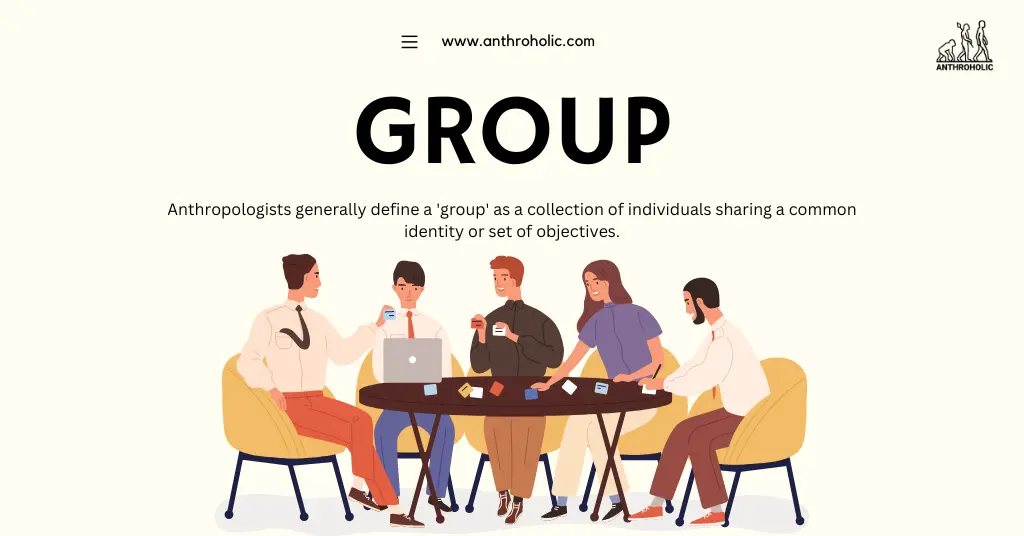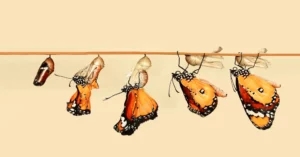AI Answer Evaluation Platform Live Now. Try Free Answer Evaluation Now
Group
The concept of a ‘group’ serves as a cornerstone in social anthropology, providing essential insights into the structures and dynamics that define human social interaction. Often, it encapsulates a variety of sociocultural phenomena, from tribes, clans, and kinship networks to modern organizations and online communities [1].

Understanding the ‘Group’ in Anthropology
Definition and Types
Anthropologists generally define a ‘group’ as a collection of individuals sharing a common identity or set of objectives. This broad definition allows for a range of groups, including:
- Primary Groups: Small, intimate groups, such as families or close friends.
- Secondary Groups: Larger, more impersonal groups with specific objectives, such as companies or sports teams.
- In-groups and Out-groups: Groups that individuals identify with and those they feel alienated from, respectively.
- Reference Groups: Groups that individuals aspire to join or emulate.
- Peer Groups: Composed of individuals who share similar ages, social statuses, or interests.
| Types of Groups | Description | Example |
|---|---|---|
| Primary Group | Small, intimate groups | Family |
| Secondary Group | Larger, impersonal groups with specific goals | Company |
| In-groups/Out-groups | Group identity or alienation | Ethnic Groups |
| Reference Group | Groups to join or emulate | Celebrities |
| Peer Group | Similar age, social status, or interests | Classmates |
Group Dynamics
Anthropological studies of groups often emphasize ‘group dynamics,’ which refer to the behavioral and psychological phenomena that occur within a group. Major factors include:
- Group Cohesion: The sense of camaraderie or unity within a group.
- Group Conflict: Disputes or disagreements within or between groups.
- Group Decision Making: The process through which a group makes decisions.
- Social Influence: The impact the group has on individual behaviors and attitudes.
Role of Groups in Societies
Groups are integral to societal function, performing several essential roles:
- Socialization: Groups socialize individuals, teaching societal norms and expectations [2].
- Emotional Support: Groups often provide emotional and psychological support to their members.
- Economic Cooperation: Groups can pool resources and cooperate to achieve common economic objectives.
- Preservation of Cultural Heritage: Groups help preserve and transmit cultural traditions and knowledge [3].
- Conflict Resolution: Groups can mediate disputes, maintaining social harmony and cohesion.
Groups in Digital Age
The advent of digital technology has redefined the concept of groups, enabling individuals to form online communities that transcend traditional geographic boundaries. These virtual groups share many characteristics with their physical counterparts, including the development of norms, the enforcement of rules, and the emergence of group identities [4].
However, these groups also exhibit unique dynamics. For instance, they can form and dissolve more rapidly than traditional groups and may experience challenges around issues such as online harassment or misinformation.
Conclusion
The ‘group’ in anthropology provides a robust lens for understanding complex social phenomena. As society evolves, this concept continues to evolve, adapting to accommodate novel forms of social interaction. Despite these changes, the core tenets of group interaction – cooperation, identity formation, conflict resolution – remain relevant, demonstrating the enduring importance of groups in shaping human behavior and society.
Sources
[1] Geertz, C. (1973). The Interpretation of Cultures. New York: Basic Books.
[2] Ogburn, W.F. (1957). Cultural Lag as Theory. Sociology and Social Research, 41.
[3] Appadurai, A. (1986). The Social Life of Things: Commodities in Cultural Perspective. Cambridge University Press.
[4] Baym, N. (2010). Personal Connections in the Digital Age. Polity Press.




